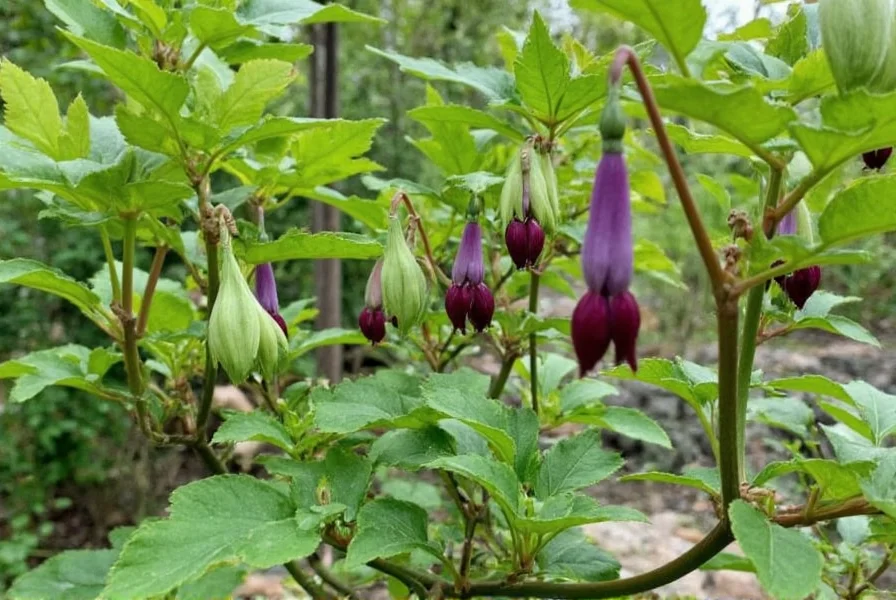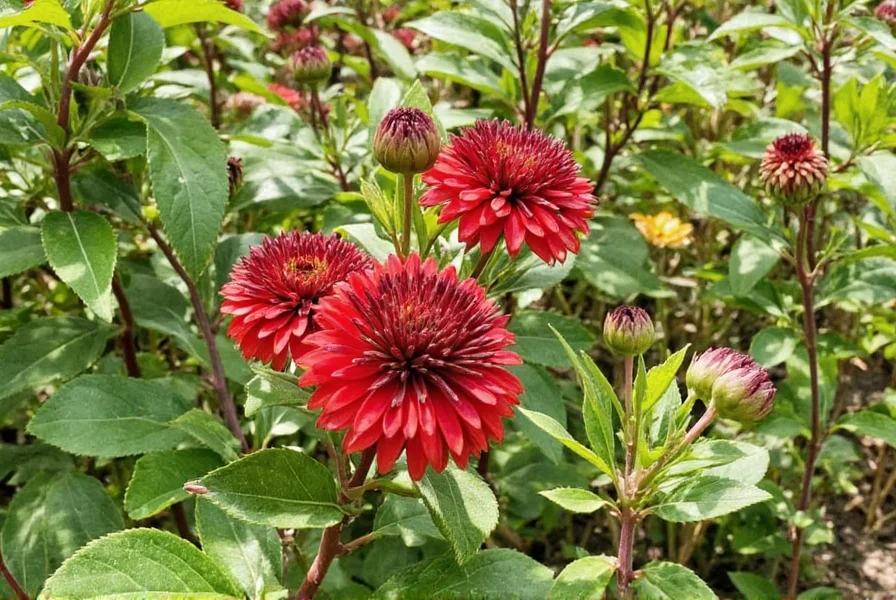Many gardening enthusiasts search for information about creating a clove garden without realizing the specific tropical requirements of true clove trees. This comprehensive guide clarifies what a genuine clove garden entails, separates fact from common misconceptions, and offers practical alternatives for gardeners in non-tropical regions.
Understanding True Clove Trees and Their Requirements
When discussing clove garden cultivation, it's essential to distinguish between Syzygium aromaticum (the true clove tree that produces the spice) and Dianthus caryophyllus (commonly called "clove pink" or "garden carnation"). These are completely different plants with vastly different growing requirements.
True clove trees are evergreen tropical species that can reach 40 feet in height when mature. They produce the aromatic flower buds we know as cloves, which are harvested just before they open. These trees have evolved to thrive in specific equatorial conditions:
| Growth Requirement | Ideal Conditions | Minimum Tolerance |
|---|---|---|
| Temperature | 70-95°F (21-35°C) | Never below 50°F (10°C) |
| Rainfall | 60-100 inches annually | Consistent moisture year-round |
| Soil Type | Volcanic, well-drained loam | Must not be waterlogged |
| Humidity | 70-90% | Avoid dry air conditions |
Can You Create a Clove Garden in Non-Tropical Regions?
The reality for most gardeners is that establishing a productive clove spice garden outside tropical zones is impractical. While you might grow a clove tree in a container indoors, it's unlikely to flower or produce harvestable cloves without perfect tropical conditions.
Gardeners in temperate climates often confuse clove trees with clove pinks (Dianthus), which are hardy perennials that grow well in USDA zones 3-9. These fragrant flowers have a spicy clove-like scent but don't produce the culinary spice. If you're searching for "clove garden ideas" for your temperate climate, you're probably looking for these aromatic alternatives rather than true clove trees.

Container Growing: The Only Option for Non-Tropical Gardeners
For dedicated gardeners in non-tropical regions who want to attempt growing true clove trees, container cultivation offers limited possibilities:
- Start with a grafted dwarf variety for better container adaptation
- Use a well-draining potting mix with added perlite and organic matter
- Maintain consistent temperatures above 65°F year-round
- Provide 50-60% humidity through regular misting or humidifiers
- Place in bright, indirect light (avoid direct afternoon sun)
- Fertilize monthly with balanced organic fertilizer during growing season
Even with perfect care, container-grown clove trees rarely produce enough buds for harvesting. Most home growers find the effort disproportionate to the minimal spice yield. The trees typically take 6-8 years to reach flowering maturity under ideal conditions.
Commercial Clove Production vs. Home Gardens
Understanding commercial clove production helps explain why home clove gardens are uncommon outside tropical regions. Major producers like Indonesia, Madagascar, and Zanzibar have perfected cultivation techniques over centuries:
- Clove trees begin bearing after 6-8 years and reach peak production around 20-30 years
- Harvesting occurs twice yearly when buds turn from green to pink
- Traditional sun-drying methods transform buds into the familiar dark brown spice
- One mature tree yields 7-18 kg of dried cloves annually under optimal conditions
These specialized conditions and lengthy maturation period make commercial production impractical outside equatorial regions, let alone in home gardens.
Practical Alternatives for Clove-Loving Gardeners
If you're interested in creating a spice garden with clove-like elements, consider these more accessible options:
- Clove Pinks (Dianthus) - These hardy perennials produce fragrant flowers with a spicy clove scent and thrive in most temperate gardens
- Clove Currant (Ribes odoratum) - A shrub with flowers that emit a strong clove fragrance in spring
- Clove Basil - A hybrid basil variety with clove-like notes in its aroma
- Wintergreen - Provides a spicy, medicinal fragrance similar to cloves
Common Misconceptions About Clove Gardens
Several persistent myths surround clove garden cultivation:
- Myth: Clove trees can grow anywhere with enough care
Reality: They require specific tropical conditions that cannot be fully replicated outside their native range - Myth: All "clove" plants produce the spice
Reality: Only Syzygium aromaticum produces culinary cloves; other "clove" plants refer to scent similarities - Myth: Clove trees grow quickly and produce abundant spice
Reality: They take 6-8 years to flower and require precise conditions for good yields
Creating a Tropical Spice Garden Experience
While a true clove garden may be out of reach for most gardeners, you can create a tropical spice garden atmosphere with these strategies:
- Combine container-grown tropical plants like ginger, turmeric, and cardamom with your clove tree attempt
- Use aromatic companion plants like scented geraniums and heliotrope to enhance the sensory experience
- Incorporate design elements that evoke tropical regions - bamboo, water features, and warm-colored pottery
- Add purchased dried cloves to garden sachets or potpourri for authentic spice garden fragrance
Remember that the essence of a spice garden lies in the sensory experience rather than strict botanical accuracy. Many successful home spice gardens focus on accessible plants that provide aromatic and culinary enjoyment within their climate zone.
Conclusion: Setting Realistic Expectations for Clove Gardening
A genuine clove garden requires tropical conditions that most home gardeners cannot provide. Understanding the specific needs of Syzygium aromaticum helps set realistic expectations and prevents wasted effort on impossible cultivation attempts. For gardeners outside tropical zones, focusing on clove-scented alternatives and creating a sensory spice garden experience offers more practical and rewarding results.
Can I grow a clove tree from store-bought cloves?
No, you cannot grow a clove tree from dried store-bought cloves. The drying process destroys the seed's viability. To grow a clove tree, you need fresh, undried clove seeds (called "mother of clove") which are only available in tropical growing regions shortly after harvest.
How long does it take for a clove tree to produce harvestable cloves?
Clove trees typically begin flowering 6-8 years after planting and reach full production around 20-30 years. The trees must mature sufficiently before producing the flower buds that become cloves. Even under ideal tropical conditions, patience is required for clove cultivation.
What's the difference between a clove garden and clove pink garden?
A true clove garden refers to cultivation of Syzygium aromaticum trees that produce the spice cloves, requiring tropical conditions. A clove pink garden features Dianthus plants (carnations) that have a clove-like fragrance but are completely different plants that grow well in temperate climates and don't produce the spice.
Can I grow cloves indoors as a houseplant?
You can grow a clove tree indoors as a houseplant, but it's unlikely to produce harvestable cloves. Indoor conditions rarely provide the consistent high humidity, temperature, and light intensity needed for flowering. The tree may survive as an ornamental plant but won't yield significant spice production.
What are the best alternatives to true cloves for home gardeners?
For gardeners seeking clove-like aromas, consider growing Dianthus (clove pinks), clove currant (Ribes odoratum), or clove basil. These plants provide similar spicy fragrances and are much more adaptable to various climate conditions than true clove trees.











 浙公网安备
33010002000092号
浙公网安备
33010002000092号 浙B2-20120091-4
浙B2-20120091-4